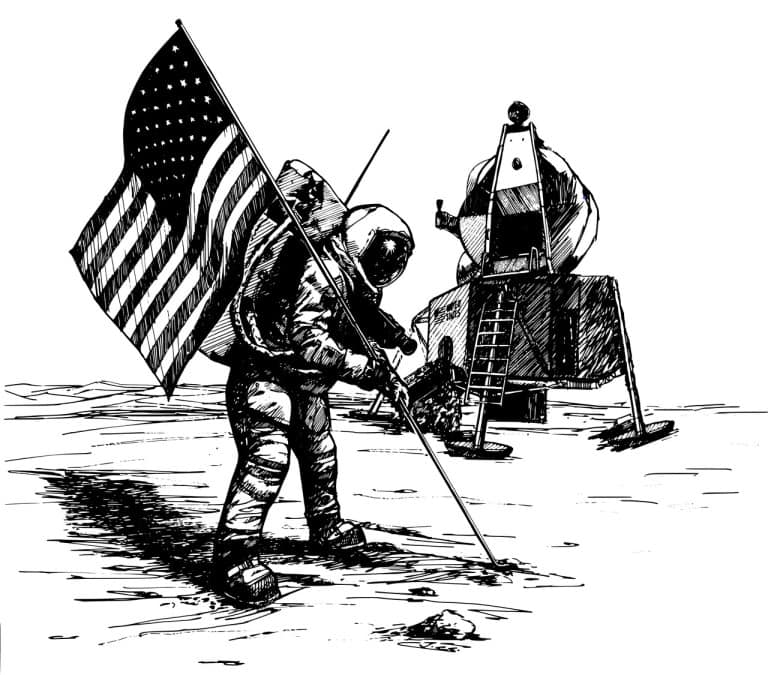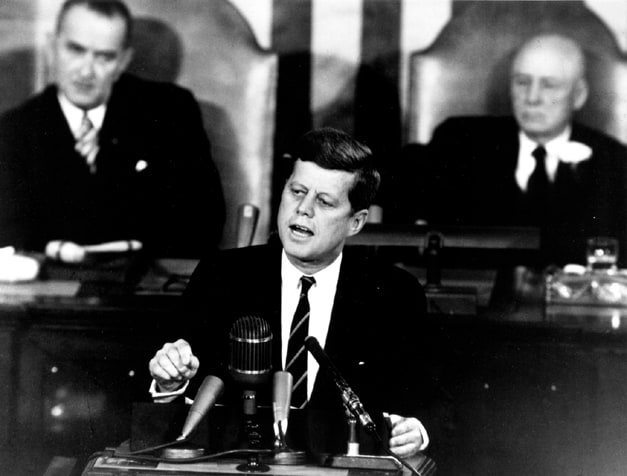
Why Vision Matters
Every project starts with a purpose, but not every project has a vision. A vision statement is more than a sentence on a project charter — it’s the north star that aligns the team, stakeholders, and sponsors around what success truly looks like. Without one, projects risk becoming a collection of tasks rather than a mission that inspires and unites.
A strong vision statement answers three essential questions:
• What are we trying to achieve?
• Why does it matter?
• By when?
When defined well, the vision doesn’t just communicate what is to be delivered, it fuels motivation and decision-making throughout the project lifecycle. It also helps prevent scope creep: when new requests or objectives appear, the team can test them against the vision. If they don’t align, they may dilute focus rather than strengthen it.
A Classic Example: JFK’s Moonshot
A classic project vision statement came not from a corporate boardroom, but from a US President. In 1961, John F. Kennedy set out the vision for the Apollo program:
This nation should commit itself to achieving the goal, before this decade is out, of landing a man on the Moon and returning him safely to the Earth.
Why does this remain a gold standard of vision statements?
• Bold and inspiring – it captured imagination and rallied an entire nation.
• Clear and concrete – not vague aspiration, but a tangible outcome.
• Timebound – “before this decade is out” gave urgency and focus.
This single sentence aligned everyone from the humblest worker to the engineers, scientists, contractors, and leaders under one banner. Crucially, it gave decision-makers a test: does this move us closer to the goal of landing on the Moon within the decade?
That is the power of vision: it creates clarity, unity, and momentum, even when the path is uncertain.
Vision Statements vs. Project Objectives
It’s important to distinguish between vision and objectives:
• Vision Statement: A big-picture expression of what success looks like, why it matters, and the impact it will have.
• Objectives: Specific, measurable steps to get there.
For example:
• Vision: “Deliver a safe, efficient rail link that transforms regional connectivity and reduces travel time between cities.”
• Objective: “Complete track installation for Phase One by Q4 2026 within the allocated budget.”
Both are essential, but the vision provides the why that energises people beyond the task list. Objectives may flex as conditions change, but the vision endures as the guiding principle.
Why Project Sponsors and Leaders Should Care
Vision statements aren’t just for the delivery team — they’re critical for leaders and sponsors. Why?
• Decision filter – When trade-offs arise, leaders can check alignment with the vision.
• Stakeholder alignment – A strong vision makes it easier to rally support across diverse groups.
• Sustained motivation – Projects often run for years; vision keeps energy alive when milestones feel far away.
• Clarity in communication – Leaders must repeatedly tell the project’s story; the vision gives them the narrative hook.
• Guardrail against scope creep – Sponsors can push back on unfocused additions by asking, “Does this serve the vision?”
How to Craft a Strong Vision Statement
When drafting your own, aim for the following qualities:
• Inspiring – motivates people at every level.
• Concise – one or two sentences, not a paragraph.
• Concrete – avoid buzzwords; be clear on the outcome.
• Timebound – where possible, include a timeframe.
When Projects Struggle Without Vision
Common signs of a missing or weak vision include:
• Team confusion about priorities.
• Decisions made in isolation, without a clear strategic anchor.
• Stakeholders pulling in different directions.
• Deliverables produced, but lacking lasting impact.
In short: projects without vision may deliver outputs, but they rarely deliver meaningful outcomes.
Takeaway
A strong vision statement is the foundation of project success. It sets direction, aligns people, and inspires action.
As JFK’s Moonshot showed, when a vision is bold, clear, and timebound, it can galvanise entire organisations — even nations — to achieve what once seemed impossible. A strong vision not only inspires — it protects. It keeps projects pointed at meaningful outcomes and shields them from distractions along the way.
